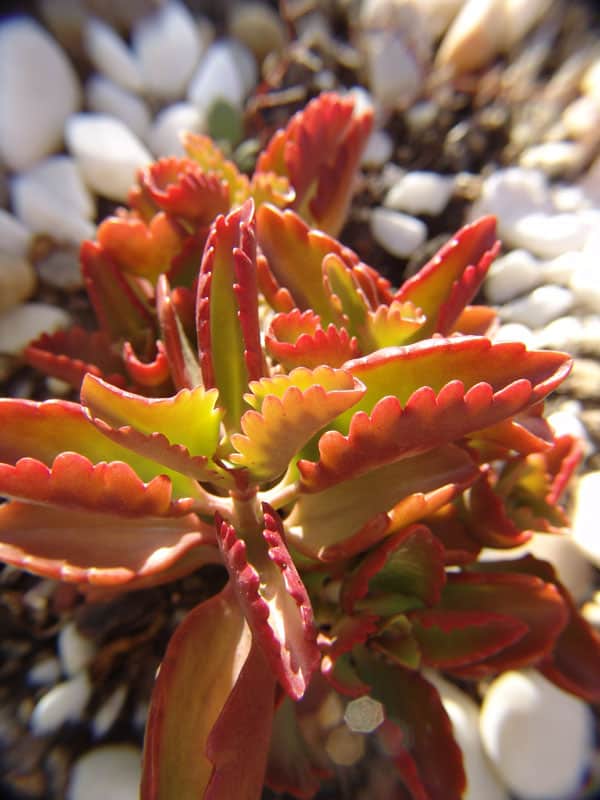The Kalanchoe longiflora coccinea “Tugela Cliff-kalanchoe” It is a fascinating succulent of the Crassulaceae family.
It has a perennial character, forming bushes of low height and wide extension for its creeping habit.
Almost all the representatives of this easy-to-grow species come from Madagascar, but this variety is native to South Africa.
It forms short, succulent stems, with thick, rounded leaves that sometimes bend inwards.
The flowers are small, yellow in color and arise in corsages.
The leaves are oval-shaped, 4 to 8 cm long, the base is cuneate and the margins are rounded in the upper half.
They are light green that can turn reddish due to the sun.
The best location is in very bright areas, preferable with some hours of sun daily.
You may like kalanchoe humilis
Tips to take care of the Kalanchoe longiflora coccinea “Tugela Cliff-kalanchoe”
Kalanchoe longiflora coccinea is a very easy plant to maintain in the garden. Next, its basic cultivation requirements:
Illumination
It is essential to provide a lot of lighting to avoid the etiolation of the stems.
The leaf spots are accentuated even more under conditions of intense lighting.
It is recommended to expose to the sun in the early hours of the morning and late in the afternoon.
Temperatures
It grows much better under the influence of high temperatures.
The optimum temperature range for the species is between 20ºC-29ºC. It does not tolerate temperatures below 0ºC for long periods.
Substratum
It requires a substrate slightly rich in organic matter and with optimal drainage.
Prolonged waterlogging will quickly rot the radical system.
Commercial substrates for crass and cacti can be used without problems with an extra aggregate of coarse sand.
Remember the previous disinfection of the substrate in order to avoid the proliferation of pathogens that are in it.
Irrigation Frequency
Irrigate preferably after drying the surface of the substrate during hot seasons.
Watering should preferably be done at the height of the substrate to avoid wetting the foliage
Plagues and diseases
Attacked mainly by mealy bugs and mollusks.
The mealybugs cause the fall of the leaves, wilting of the flowers and allow the proliferation of pathogenic fungi.
Molluscs devour sections of leaves and stems in a short time.
Multiplication:
It is multiplied by cuttings of stems or from leaves.
To grow Kalanchoe longiflora coccinea from cuttings, use a sterile, sharp knife or pair of scissors. Remove a stem from the main plant, and allow it to callous for several days before placing on well-draining soil. Water whenever the soil has dried out completely.
Conclusion
The Kalanchoe longiflora coccinea is a succulent plant of relatively rapid growth that reach 60 cm in height and width.
Its fleshy serrated edge leaves are bright green with reddish tones if they receive enough light.
They produce floral stems above the leaves full of yellow flowers. They bloom during the summer.
They are ideal for use in rockery, dry slopes, borders or in pots and planters.
The long flower Kalanchoe longiflora coccinea prefers a full sun exposure but can also live in semi-shade.
Tolerates well the heat of the Mediterranean summer but not the cold, so the winter safety temperature is 5ºC.
The best soil for these Kalanchoe longiflora coccinea would be a garden land with enough thick siliceous sand or a commercial substrate for cacti and succulents.
